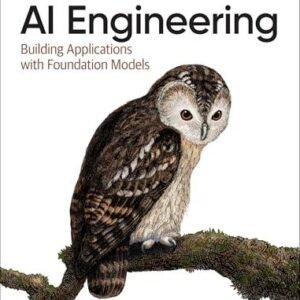In recent years, artificial intelligence (AI) has emerged as a groundbreaking force, reshaping various industries and disciplines. Among the fields experiencing this seismic shift is computational theory—a cornerstone of computer science that explores the limits of what can be computed and how efficiently. As AI technologies continue to evolve, they are not only redefining traditional computational paradigms but also inspiring innovative approaches to longstanding theoretical questions. From enhancing algorithmic efficiency to providing new insights into problem-solving frameworks, the infusion of AI is paving the way for a renaissance in computational thought. In this article, we will delve into the intricate interplay between AI and computational theory, examining how this transformative synergy is reshaping our understanding of computation and its potential in the modern world.
Table of Contents
- The Evolution of Computational Theories in the Age of Artificial Intelligence
- Key AI Innovations Reshaping Algorithms and Complexity Classes
- Best Practices for Integrating AI into Computational Research and Development
- Future Directions: Preparing for the Next Wave of AI-Driven Computational Advances
- Wrapping Up
The Evolution of Computational Theories in the Age of Artificial Intelligence
As artificial intelligence continues to permeate various sectors, it profoundly influences the development of computational theories, reining in new paradigms that redefine traditional models. This transformation is evident in the shift towards machine learning and deep learning, where algorithms learn from vast data sets, thus challenging established notions of computation. Neural networks, for instance, innovate how we approach information processing, moving beyond static algorithms to dynamic systems capable of adaptation and self-improvement. Consequently, theoretical frameworks must evolve to address complexities such as emergent behaviors, nonlinearity, and uncertainty inherent in these sophisticated systems.
The potential of AI is not limited to just enhancing existing computational models; it also opens up avenues for entirely new theories. Researchers are exploring concepts like quantum computing in conjunction with AI, which could revolutionize how we understand data processing at a fundamental level. The relationship between information theory and AI is also gaining traction, as learners begin to uncover patterns and structures in data that were previously obscured. To illustrate these advancements, here’s a concise overview of key areas impacted by AI:
| Area | Traditional Approach | AI-Driven Evolution |
|---|---|---|
| Algorithm Design | Static, rule-based | Adaptive, learning-based |
| Information Processing | Deterministic | Probabilistic |
| Data Handling | Structured data focus | Unstructured data utilization |
Key AI Innovations Reshaping Algorithms and Complexity Classes
The rapid evolution of artificial intelligence is significantly transforming the realm of computational theory, especially in the ways we conceive of algorithms and complexity classes. Advanced machine learning techniques, such as neural networks and reinforcement learning, are enabling researchers to devise smarter algorithms that can solve problems previously deemed intractable. These AI-driven methods not only streamline computational processes but also redefine lower and upper bounds on problem complexity, leading to breakthroughs in areas like optimization and cryptography.
Among the notable innovations are techniques that leverage quantum computing alongside machine learning to enhance algorithm efficiency. As we delve deeper into this confluence of technologies, several key advancements emerge:
- Adaptive Algorithms: AI models that adjust themselves based on input data, improving performance over time.
- Hybrid Models: Combining classical algorithms with AI elements to tackle complex scenarios more effectively.
- Complexity Reductions: AI approaches that simplify traditional complexity classes, making problems easier to solve in practice.
| Innovation | Impact on Algorithms | Impact on Complexity Classes |
|---|---|---|
| Neural Optimizers | Streamlined searching capabilities | Redefines P vs NP boundaries |
| Adaptive Learning | Real-time algorithm adjustments | Challenges traditional classifications |
| Quantum AI | Exponentially faster problem-solving | Potentially collapses complexity hierarchies |
Best Practices for Integrating AI into Computational Research and Development
Successfully integrating AI into computational research and development requires a strategic approach. Establishing clear goals is essential; teams should identify specific problems that AI can assist with, whether that’s optimizing algorithms, enhancing data analysis, or facilitating model simulations. In addition, fostering a collaborative environment where interdisciplinary teams can converge is crucial. Data scientists, domain experts, and computational theorists should work hand-in-hand to ensure that the AI systems developed are contextually relevant and scientifically robust. Regular feedback loops should be established to iterate on AI models based on empirical performance, ensuring continuous improvement and adaptation to new findings.
Moreover, attention must be paid to data quality and availability. AI models thrive on high-quality, well-structured data; hence, implementing robust data governance practices is vital. This includes methodologies such as data cleaning, normalization, and ensuring proper data augmentation techniques. Additionally, leveraging open-source frameworks can significantly speed up the development process, providing access to tools, libraries, and community support that can enhance research outcomes. It’s also imperative to maintain a focus on ethics and transparency; researchers must be vigilant about the potential biases within AI algorithms and work towards creating fair and inclusive models that contribute positively to the field.
Future Directions: Preparing for the Next Wave of AI-Driven Computational Advances
The future of computational theory is being reshaped by the rapid evolution of AI technologies. As we look forward, multimodal learning, quantum computing, and explainable AI are expected to spearhead significant advancements. Each area offers a unique pathway for enhancing computational capabilities and pushing the boundaries of what machines can achieve:
- Multimodal Learning: Harnessing different types of data (text, images, sound) to create more sophisticated AI models.
- Quantum Computing: Exploring the potential of quantum algorithms to solve complex problems far beyond classical computing limits.
- Explainable AI: Focusing on transparency to build trust in AI systems and facilitate their adoption across critical sectors.
Moreover, interdisciplinary collaboration will play a vital role in catalyzing these developments. Bridging the gap between computer science, neuroscience, and ethics can lead to innovative frameworks for deploying AI responsibly. To illustrate the intersection of these fields, consider the following table that highlights emerging collaborative areas:
| Field | Emerging Area | Potential Impact |
|---|---|---|
| Computer Science | Neurosymbolic AI | Enhanced reasoning capabilities in AI systems. |
| Neuroscience | Brain-Computer Interfaces | Direct interaction between humans and machines. |
| Ethics | AI Governance | Frameworks for accountability and fairness in AI. |
Wrapping Up
As we navigate the intricate tapestry of computational theory, it’s clear that artificial intelligence is not merely a tool but a transformative force that is reshaping our understanding and application of complex concepts. From enhancing problem-solving capabilities to redefining algorithmic efficiency, AI is ushering in a new era of exploration and innovation.
The implications of these advancements are profound, extending beyond academia into industries ranging from healthcare to finance, and challenging the traditional paradigms of what computation can achieve. As we continue to harness the potential of AI, it’s essential for researchers, practitioners, and students alike to remain curious and adaptable.
embracing the changes brought forth by AI is integral to our progress in computational theory. As we stand at the forefront of this revolution, the questions we ask and the paths we choose will shape not just the future of AI, but the very foundations of computation itself. Let’s engage in this dialog, share insights, and collaborate on the breakthroughs of tomorrow. Thank you for joining us on this journey into the intersections of AI and computational theory—may it inspire new ideas and innovations in your own work!





